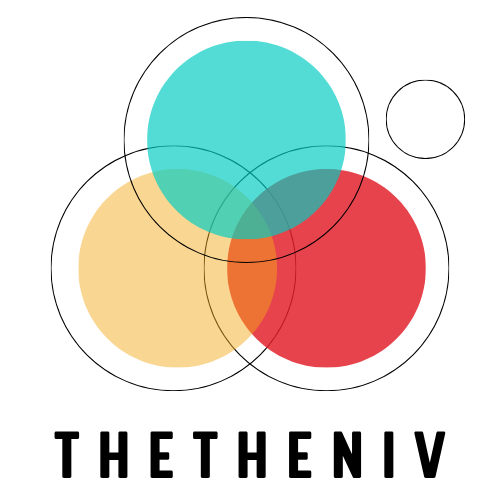Iklan
innovation collaboration can speed learning and cut time to market in ways single firms rarely match.
Do you wonder how a mix of companies, universities, and startups can solve problems faster than one team can alone? You are in the right place to explore that question.
The Boeing 787 shows how a global network of engineers and suppliers raised fuel efficiency and comfort. That case highlights the benefits of a staged approach that values speed, trust, and diverse talent.
This guide gives practical options for businesses and organizations. You will see how to pick partners, set governance, use tools, run pilots, and measure outcomes. These tips are advice, not a guarantee — adapt and measure as you go.
Introduction: Why innovation collaboration matters now
As product cycles shorten, you face new rivals and new partners at the same time. The current environment compresses time to test ideas and deploy them. Digital platforms now connect companies, labs, startups, and users. That mix changes who can help solve your hardest problems.
Iklan
Cross‑industry work unlocks three clear gains: more creativity from diverse perspectives, faster paths to market, and shared value that keeps everyone engaged. Many organizations use staged pilots, hackathons, and access‑based IP to move quickly while managing risk.
Use this guide as practical guidance, not a guarantee. Try time‑boxed pilots, embed legal counsel early, and measure learning fast. Align incentives so each partner sees tangible value before you scale.
Today’s landscape: complex ecosystems, faster cycles, and new partners
What cross‑industry work really unlocks: diversity, speed, and shared value
- Product cycles compress and platforms link sectors, changing your competitive set.
- Diverse partners increase creativity, reduce blind spots, and speed time to market.
- Transparent processes—intake, triage, staged experiments—help you learn and limit risk.
“Teams that combine clear goals, psychological safety, and diverse skills find better ideas faster.”
Iklan
How to use this guide: practical steps, real cases, and adaptable tools
This guide offers steps, templates, and examples you can adapt to your context. Test assumptions with short pilots and map legal constraints up front. If you need specialized help, consult experts as you scale.
Defining collaborative innovation, open innovation, and crowdsourcing
A shared vocabulary makes it easier to decide whether to tap a crowd or form a targeted partnership. Clear definitions help you assign owners and timelines so ideas flow into action.
Collaborative innovation is orchestrating continuous feedback loops among varied stakeholders to generate and mature ideas. It links internal teams and external partners so learning stays connected across pilots and scale-ups.
Key differences and where they overlap in practice
- Crowdsourcing taps broad public sources for divergent idea generation. Use it when you need fresh, high-volume inputs.
- Open innovation structures targeted access to external knowledge, licensing, and commercialization paths.
- In practice: crowdsourcing often feeds the idea funnel; open innovation vets and acquires tech; collaborative innovation connects the funnel to delivery.
Internal vs external participants
Participants include employees, customers, startups, academic labs, and not‑for‑profits. Each group brings different data, skills, and incentives.
Map roles early: assign owners, timelines, and outcomes for each model. Lightweight governance helps contributors know how credit is assigned and how an idea advances. Many businesses Dan organizations blend these models to match opportunity types without losing value.
“Aligning terms and a simple taxonomy prevents fragmented work and value leakage.”
Business case and benefits you can quantify
Quantifying the business case helps you move from hopeful experiments to decisions that the C-suite can fund. Start with a short baseline of current metrics so you can show change over time.
Creativity and problem‑solving through diverse expertise
Diverse teams boost creativity by combining domain knowledge and fresh perspectives. Cross‑disciplinary input often surfaces unconventional solutions and shortens problem‑solving time.
Practical metric examples: participation rate in programs (target 10–30% of invited stakeholders), average time from idea submission to pilot (aim: 4–12 weeks), and conversion rate from pilot to market (benchmarks: 10–25%).
Speed-to-market vs perfection: why staged approaches help
Run low‑cost pilots and sandboxes to test desirability, feasibility, and viability before scaling. Staged approaches let you capture early market advantages without over‑engineering.
Track pilot cycle time, incremental revenue per pilot, and avoided costs to show tangible impact. Use threshold criteria so you move ideas forward or stop them quickly.
Engagement, risk spreading, and portfolio effects across ideas
Spread bets across themes and horizons to manage uncertainty. Diversifying sources across startups, labs, and companies reduces single‑point risk and improves learning velocity.
- Link diversity to creativity and faster solutions.
- Quantify participation, cycle times, and pilot‑to‑market rates quarterly.
- Tie outcomes to value: avoided costs, incremental revenue, and strategic options.
“Baseline metrics and rapid learning let you treat experiments as strategic options rather than sunk costs.”
These are guiding practices, not guarantees. Encourage your businesses to baseline, remeasure quarterly, and use results to steer portfolio choices.
How to choose and structure cross‑industry partners
Picking the right mix of external partners shapes how fast your projects move from idea to market. Start with clear partner profiles so you know what each partner must deliver.
- Startups: speed and niche tech; scaleups: proven traction; not‑for‑profits: mission fit and access.
- Screen for strategic fit: problem alignment, data needs, regulatory limits, and integration ability.
- Validate references, security posture, and compliance before you commit resources.
Use themed challenges, hackathons, and open calls on platforms to surface diverse ideas and new sources of talent. Run time‑boxed pilots with sandbox access and clear success metrics to keep scope disciplined.
Align goals and decision rights early. Document desired outcomes, success metrics, and escalation paths so teams and companies avoid friction later.
“Trust grows faster when constraints, IP baselines, and risks are shared openly.”
Clarify IP up front: decide what you must own versus what can be licensed or accessed. Finally, calibrate incentives—co‑marketing, revenue share, or dataset access—to sustain engagement across your partner range.
Governance that enables innovation without slowing it down
Set clear guards and fast decision points so experiments move forward without red tape. A lightweight governance approach balances speed and control by using stage gates for pilot, sandbox, and scale phases.

Staged models and decision SLAs
Define stage gates with short decision SLAs (for example: 5 business days for pilot approval). Use simple criteria at each gate: desirability, feasibility, and compliance.
Process essentials and systems
Map intake, evaluation criteria, risk checks, and documentation flows so teams keep momentum. Keep a single system of record to track agreements, IP terms, and compliance artifacts.
IP: access-first options
Access over ownership often speeds adoption. Consider licensing, joint development, open source contributions, and data‑sharing agreements that prioritize access.
Legal alignment early
Embed in‑house counsel from day one. Counsel surfaces privacy, security, antitrust, and sector rules before they become blockers.
- Use templated NDAs, MSAs, and baseline IP positions to reduce negotiation time.
- Define escalation and exception paths so edge cases don’t stall the process.
- Review technology transfer practices and features regularly to match evolving laws and standards.
“Governance should enable responsible speed, not create unnecessary friction.”
Guidance, not guarantees: in regulated sectors, use sandboxes or spin‑ins/spin‑outs to test tech safely, then fold successes into your regular systems under proper regulatory oversight.
Teams, culture, and mindset that power collaborative innovation
Your people and the way they work together decide whether an idea stalls or scales. Build clear roles, safe norms, and visible progress so teams move with purpose.
Cross-functional teams with clear roles and psychological safety
Define roles so no one wonders who owns what: product owner, facilitator, technical lead, legal/privacy rep, and data steward. Keep role descriptions short and task-focused.
Psychological safety matters. Leaders should model curiosity, admit uncertainty, and invite dissent. Small rituals—idea check-ins or red-team reviews—help people speak up.
Fostering a collaborative and “possibility” mindset
Reframe blocks into “how might we” questions to nudge creative thinking. Celebrate small wins and rotate members between domains to broaden perspective.
Motivation systems: recognition, points, and transparent progress
- Use platforms with points, badges, and visible leaderboards tied to meaningful feedback.
- Publish dashboards that show idea status, decisions, and next steps to keep employees engaged.
- Offer micro-learning on creativity and inclusive facilitation so contributions improve over time.
“Shared vision, clear roles, and public recognition turn good intent into sustained action.”
Tools and platforms to run the innovation process
Choose the right mix of platforms and tools to capture, sort, and move ideas into action.
Start with a clear shortlist: deploy an idea management platform for intake and scoring, a workflow system for tasking, and document tools for co‑creation. Pick examples you know: Brightidea, Ideanote, or a tech scouting tool for sourcing new tech. Pair those with Asana or Trello for tasks and Slack or Teams for real‑time chat.
Core capabilities and selection guidance
- Configurable intake, scorecards, and portfolio views to sort ideas and prioritize work.
- Integrations: APIs, SSO, and connectors to your workflow and document systems.
- Social features: threads, @mentions, voting, and points to boost participation.
- Analytics: participation, cycle times, lessons captured, and downstream impact.
- Governance: roles, permissions, and audit trails to meet compliance needs.
Pilot a platform in one theme, measure participation and cycle time, then refine configuration. Train your employees and stakeholders with quick starts and office hours to speed adoption.
“Treat the stack as a system of record for experiments, risks, and IP terms.”
From ideas to impact: process, metrics, and real‑world examples
Turn ideas into measurable outcomes by mapping a tight, repeatable process from intake to scale. A clear end‑to‑end approach helps you prioritize work, limit risk, and show value quickly.
Process basics: intake, triage, experiments, and scale‑up
Define intake criteria so submissions meet your strategic needs. Use a quick triage routine to score desirability, feasibility, viability, and risk.
Design short experiments with clear success thresholds. Keep a scale‑up playbook that lists handoffs, interfaces, and required approvals.
Metrics that matter: participation, cycle times, learning, and outcomes
Track participation rate, time from idea submission to pilot start, pilot duration, and time‑to‑decision. Capture assumptions, test results, and decision rationales to build repeatable learning.
Limit work‑in‑process so reviewers stay focused. Use analytics to tie implemented ideas to cost savings, revenue, or experience gains.
Case snapshot: Boeing 787 and the power of a global expert network
The Boeing 787 program coordinated experts across multiple companies and countries. That coordinated development, clear interfaces, and shared standards delivered gains in fuel efficiency, comfort, and performance.
“Coordinated standards and open lines of work let separate teams scale a complex program.”
- Map intake, triage, experiment design, and scale playbooks.
- Use gating criteria and capacity signals to maintain flow.
- Close feedback loops and add market‑aware checkpoints for timed releases.
Mengukur dampak continuously so your process delivers repeatable value and keeps contributors informed of decisions and next steps.
Risks, pitfalls, and how to de‑risk collaboration
Before you scale, name the major pitfalls and put simple guards in place. Common challenges include rushing past diligence, unclear IP rights, culture mismatches, and regulatory surprises. These can derail time and value if left unchecked.
Common hurdles: speed vs diligence, IP conflicts, and culture clash
Rushing to market often means skipping checks that later become costly. Academia‑industry ties can clash over publication rights and timing.
Cross‑border work adds export controls, data residency, and standards gaps. Unclear IP or data rules cause negotiations to stall and partners to lose trust.
Practical safeguards: baseline positions, transparency, and exit ramps
Set baseline positions on IP, data use, and confidentiality to speed talks and reduce disputes. Embed legal reps early to flag compliance and jurisdiction issues.
Publish transparent processes: selection criteria, decision timelines, and feedback norms. Define exit ramps with kill criteria, IP wind‑down terms, and transition plans.
- Map stakeholder roles: who decides, who funds, who owns risk.
- Run light risk reviews at each stage to catch issues early.
- Onboard cultures with working agreements and a living risk register reviewed with partners.
“Staged checks and clear exits reduce waste and keep projects focused on value.”
Kesimpulan
Start small this quarter and treat early experiments as learning bets that build toward bigger wins.
Pair diverse partners with clear goals and lightweight governance so your work moves fast and stays focused. Use staged pilots to test ideas, measure participation and cycle time, and scale what shows measurable impact.
Follow a simple path: define models, build the business case, pick partners, set governance, equip teams, and run tools that capture learning.
Think of collaborative innovation as a portfolio: expect variation, capture lessons, and let data steer your choices. Embed legal and compliance early to clear blockers and protect shared value.
Track the benefits you can prove—participation, faster cycle times, learning captured, and implemented impact—and keep updates transparent. No single company or products team can do complex problems alone; shared expertise amplifies results.
Tindakan: start a focused pilot this quarter, measure openly, and consult domain experts to strengthen your next iteration.



